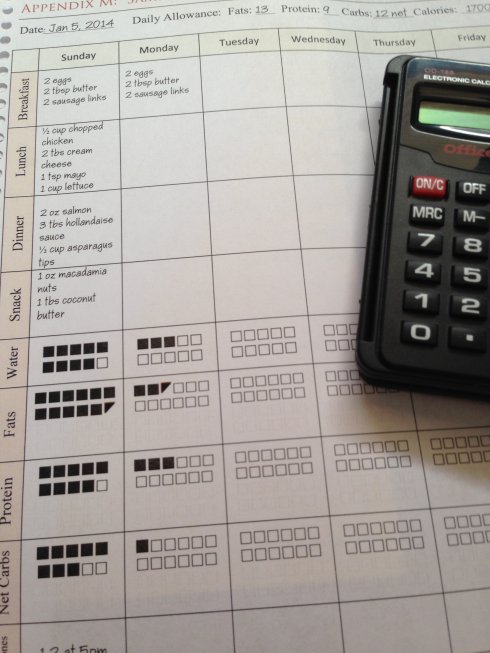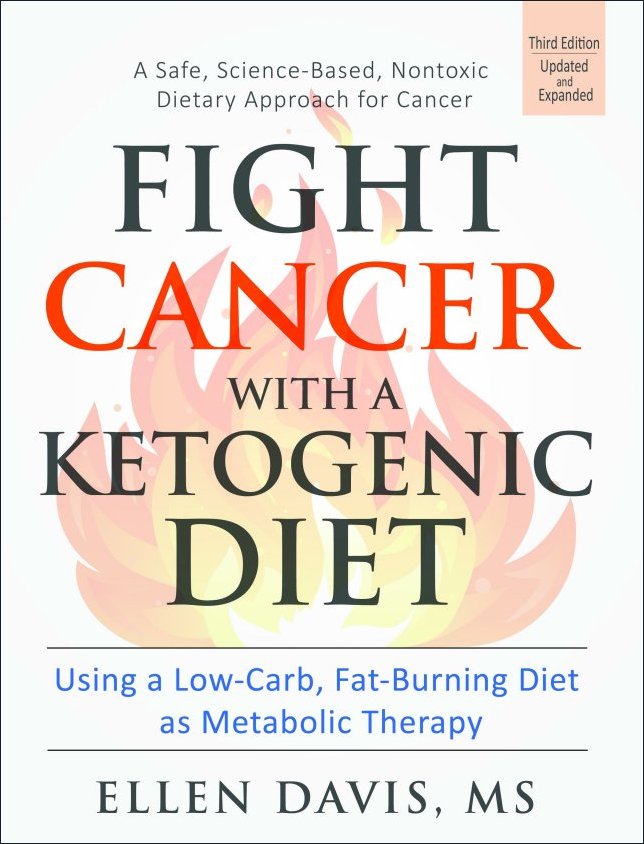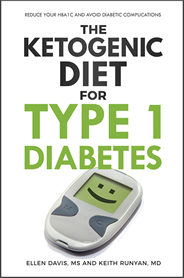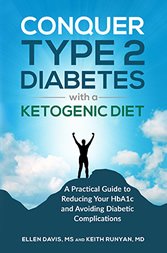Calorie Counting: Helpful or Not?

Calorie counting is not usually necessary on a ketogenic diet. Keeping carbohydrate intake super low and protein intake moderate works for most people, and calories take care of themselves. This is because a ketogenic diet is very satiating. After you adapt to ketosis, you'll find you just aren't as hungry as you were when you ate lots of carbohydrates. Being in ketosis has a marked dampening affect on the appetite, and most people spontaneously reduce their food intake automatically.
However, for some people, myself included, it may be necessary to track calorie intake to take off excess weight. There are two ways to do figure out how much of each macronutrient (fat, protein, carb) as a percentage of calories :
- Use ketogenic percentage ratios
- Setting gram amounts of protein, carbs and fats on a reference weight and then multiplying to get calories.
I think the second way is the better way and I'll explain why, but let's explore the first way.
Using Percentage Ratios for Calorie Counting
You can set calories on the ketogenic percentage ratios of about 70% of calories from fat, about 20% from protein, and under 10% from carbohydrate.
Here's an example on how to do it.
Let's say you set your total calorie intake for the day to be 1500. Here's one way to calculate how many grams of fat, carb and protein to eat:
- 1500 x .70 = 1050 calories from fat. Fat has 9 calories per gram = 1050/9 = 116.5 grams of fat. (Reference: 1 tablespoon of butter has 12 grams of fat.
- 1500 x .20 = 300 calories from protein. Protein has 4 calories per gram, = 300/4 = 75 grams of protein. (Reference: an ounce of meat has 7 grams of protein).
- 1500 x .10 = 150 calories from carbs. Carbs have 4 calories per gram, = 150/4 = 38 grams of carb. (Reference: 1 slice bread has 25 grams of carb.)
While these ratios may work for a woman who exercises occasionally, for a heavily muscled man who works out twice a week, this may not be enough protein.
Using Protein Gram Needs and Reference Body Weight
Another way to set calorie intake is to start with individual protein requirements. I think this is the better, more accurate way to figure out ratios. Here's why:
Total daily protein needs should always stay the same no matter how many calories you choose to eat in a day. Using percentages to set intake can be misleading if calorie intake is very low or very high. For instance, say a person weighs 200 pounds, but they want to weigh 160 pounds. They decide to eat 1200 calories a day in order to lose weight. Do they set protein requirements on 200 pounds or 160 pounds?
The best choice here is to set protein requirements on a reference weight of either lean body mass (if known) or on ideal or goal body weight. This method is more accurate in providing enough protein to support lean body muscle mass but not so much as to increase blood sugar.
The general formula for protein grams per day is 1 to 1.5 grams of protein per kilogram of reference weight. So in our example, we would convert pounds to kilograms by dividing pounds by 2.2 (and then multiply by 1 gram, which gives the same number, and then by 1.5).
160/2.2= 72 kilograms of weight
72 * 1.5= 108 grams
So this person should shoot for between 72-108 grams of protein per day. Now as you can see, this is pretty close to the 20 percent measure from above, but in other cases, it may not be, and calorie counting is important.
Percentages Can Be Misleading...
Now let's explore how changing protein or calorie amounts can affect percentages. What happens if
- percentage measures stays the same while protein or calories change, or
- calories stay the same while protein amounts change or
- protein amounts stay the same while calorie amounts change.
Static Percentages of Calories Can Affect Protein Gram Measures
Look at percentages as calorie intake changes. If we were to stick with the 20 percent rule above, it would result in different protein intakes depending on calorie intake:
- 2000 calories x .20 = 400 calories from protein. At 4 calories per gram = 400/4 = 100 grams of protein
- 1500 calories x .20 = 300 calories from protein. At 4 calories per gram = 300/4 = 75 grams of protein
- 1200 calories x .20 = 240 calories from protein. At 4 calories per gram = 240/4 = 60 grams of protein
If this person was a big guy with lots of muscle mass, he might not get enough protein each day on 60 grams. But if instead this was a small woman who wanted to eat 2000 calories a day to maintain her weight, 100 grams would most likely be too much protein on a ketogenic diet. This is why it's better to start with a static amount of protein grams to make sure you eat enough to support your lean body mass or ideal reference weight, and then do your calorie counting.
Static Calories and Changing Protein Intake Changes Percentages
Now let's look how protein gram amounts affect percentages when calorie intake is static:
- 2000 calories, 100 grams of protein = 400 calories/2000 calories = 20% of calories as protein
- 2000 calories, 75 grams of protein = 300 calories/2000 calories = 15% of calories as protein
- 2000 calories, 60 grams of protein = 240 calories/2000 calories = 12% of calories as protein
You can see why it's misleading when dietitians insist that protein intake should be a certain percentage of your calories when they have no idea of the calorie intake.
Static Protein Intake Changes Percentages
One more example of why percentages can be misleading when protein intake is static:
- 2000 calories, 80 grams of protein = 320 calories/2000 calories = 16% of calories as protein
- 1500 calories, 80 grams of protein = 320 calories/1500 calories = 21% of calories as protein
- 1200 calories, 80 grams of protein = 320 calories/1200 calories = 27% of calories as protein
As you can see, even though the protein intake is exactly the same, I've seen dietitians get concerned about a ketogenic diet being "high" protein at 27%, when no caloric reference is given. This is also probably why so many people think that low carb diets are high-protein diets.. they incorrectly judge by the percentage of protein without thinking about calorie intake.
Calorie Counting Can Be Helpful
Calorie counting is helpful sometimes just to figure out the above information, and to figure out how much fat to eat each day. Because carb and protein grams are static numbers daily, fats become the macronutrient that can be manipulated to change caloric intake.
- You want to keep your carb intake in the ketogenic range (20-60) per day, depending on your body size and metabolism). To keep carbs low, concentrate on green leafy vegetables such as salad vegetables like lettuce and cucumbers.
- Eat enough protein containing foods (meat, fish or chicken) to satisfy. Support your lean body mass (muscles) by eating enough, but don't eat more than you need as that will affect blood sugar. See my daily protein requirements page for more information on how to figure out protein needs.
- Fill in the rest of your calories with fats. This is the part that can be manipulated if you find weight loss is slower than you would like. Eat less fat to drop caloric intake.
Because your carb count is so low on a ketogenic diet, you have to limit the higher sugar vegetables (squash, peppers, tomatoes) and fruits. And of course, any product made with flour or sugar is totally out.
Calorie counting can be helpful, but there are caveats, as discussed above. If you wondering what foods are best to eat, see this low carb food list for examples of the foods which are allowed on a ketogenic diet plan.
To track your food values and intakes, you can use the free database at the USDA website, or pick up a food counter book that gives you the calorie, carb, fat and protein counts in common foods. Or you can buy a piece of software like Fitday or an online calorie counting service to help you keep track.
All of my books are available in electronic PDF, and now in paperback on Amazon!
 |
 |
 |
|
Buy paperbook on Buy paperback on Amazon Buy the e-Book via Paypal |
Buy paperback on Buy paperback on Amazon Buy the e-Book via Paypal |
Buy paperback on Buy paperback on Amazon Buy the e-Book via PayPal |